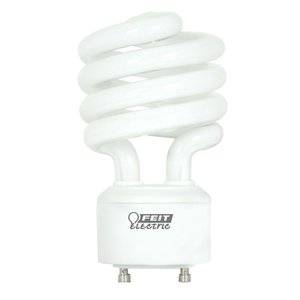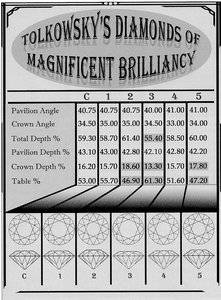- Joined
- Sep 2, 2002
- Messages
- 2,859
Seeing how many posters try to define ‘super-ideal’ here, I think some historical perspective might help. Pricescope has nearly a 20 year history, preceded by another forum some years prior. Luckily, I have been active on these very early on. Seeing how a certain term pops up with its definition gradually changing is very interesting.
So, for the start of the term ‘super-ideal’ on these forums we need to go back to the end of the last century. At the time, GIA did not have a cut-grade at all. AGS had started a lab in 1996, and there being a meaningful cut-grade with the top-grade of Ideal, caused a certain popularity of the new lab on the forums.
However, that first version of the AGS cut-grade was still 2-dimensional, leading to a rectangular Ideal-box on a PA-CA-chart. This led to division of cut-quality-followers into two groups:
- An industry-inclined group of professionals, used to selling cert-results, aiming to simply obtain the minimum of the AGS-Ideal grade.
- A more consumer-oriented group of professionals (including some specializing retailers who were very present on internet forums) seeking pavilion-angle and crown-angles to be complementary.
Both of these groups claimed to sell Ideals. But there was a rift between the industry-inclined group, who could find their interpretation of ‘Ideal’ with relative frequency, and the consumer-oriented group, who had a narrower range of ‘Ideal’, harder to obtain.
Out of the realization that not all Ideals were clearly equal, the term super-ideal originated. At the time, H&A was not a factor in calling a round diamond super-ideal. Somewhat to the contrary even, the main company in the US which created awareness for H&A, also used AGSL as their lab, but while producing somewhat of a H&A-pattern, they did not necessarily avoid the steep-deep-area of AGS-Ideal.
Next steps, AGSL totally overhauled their cut-grading-system in 2005 making it 3-dimensional. But before that could really sink-in, GIA launched their 2-dimensional proportions grade in 2006, taking into account in a very broad way the complimentary workings of pavilion and crown angles.
Suddenly, the old references to super-ideal were not correct anymore. But still, even within the new 2005 AGS-Ideal-grade, there were various levels of performance. Not to mention the new 2006 GIA-EX-grade was/is extremely liberal and wide. And here, especially, the long-standing HCA immediately contradicted much of the new GIA EX range, leading to new arguments among the industry-inclined pros versus the consumer-oriented pros. All this noise resulted in consumer regulars needing to invent some patchwork 2-dimensional ‘shortcuts’ in their communications to new posters.
Anyway, regardless of how one tries to define ‘super-ideal’ today, I think it is important to understand where the term originated.
Personally, I am not a fan of such categorizations. I understand the desire to simplify and especially to identify diamonds not making the ‘category’. But on the flip-side, every categorization also creates a race to the bottom of that category by many in the industry. It happened with the original 2-dimensional Ideal-grade of AGS. It is happening with the EX-grade of GIA. It is happening with the current Ideal-grade of AGS. I see it as a natural consequence of a method to categorize becoming popular.
Live long,
So, for the start of the term ‘super-ideal’ on these forums we need to go back to the end of the last century. At the time, GIA did not have a cut-grade at all. AGS had started a lab in 1996, and there being a meaningful cut-grade with the top-grade of Ideal, caused a certain popularity of the new lab on the forums.
However, that first version of the AGS cut-grade was still 2-dimensional, leading to a rectangular Ideal-box on a PA-CA-chart. This led to division of cut-quality-followers into two groups:
- An industry-inclined group of professionals, used to selling cert-results, aiming to simply obtain the minimum of the AGS-Ideal grade.
- A more consumer-oriented group of professionals (including some specializing retailers who were very present on internet forums) seeking pavilion-angle and crown-angles to be complementary.
Both of these groups claimed to sell Ideals. But there was a rift between the industry-inclined group, who could find their interpretation of ‘Ideal’ with relative frequency, and the consumer-oriented group, who had a narrower range of ‘Ideal’, harder to obtain.
Out of the realization that not all Ideals were clearly equal, the term super-ideal originated. At the time, H&A was not a factor in calling a round diamond super-ideal. Somewhat to the contrary even, the main company in the US which created awareness for H&A, also used AGSL as their lab, but while producing somewhat of a H&A-pattern, they did not necessarily avoid the steep-deep-area of AGS-Ideal.
Next steps, AGSL totally overhauled their cut-grading-system in 2005 making it 3-dimensional. But before that could really sink-in, GIA launched their 2-dimensional proportions grade in 2006, taking into account in a very broad way the complimentary workings of pavilion and crown angles.
Suddenly, the old references to super-ideal were not correct anymore. But still, even within the new 2005 AGS-Ideal-grade, there were various levels of performance. Not to mention the new 2006 GIA-EX-grade was/is extremely liberal and wide. And here, especially, the long-standing HCA immediately contradicted much of the new GIA EX range, leading to new arguments among the industry-inclined pros versus the consumer-oriented pros. All this noise resulted in consumer regulars needing to invent some patchwork 2-dimensional ‘shortcuts’ in their communications to new posters.
Anyway, regardless of how one tries to define ‘super-ideal’ today, I think it is important to understand where the term originated.
Personally, I am not a fan of such categorizations. I understand the desire to simplify and especially to identify diamonds not making the ‘category’. But on the flip-side, every categorization also creates a race to the bottom of that category by many in the industry. It happened with the original 2-dimensional Ideal-grade of AGS. It is happening with the EX-grade of GIA. It is happening with the current Ideal-grade of AGS. I see it as a natural consequence of a method to categorize becoming popular.
Live long,









300x240.png)